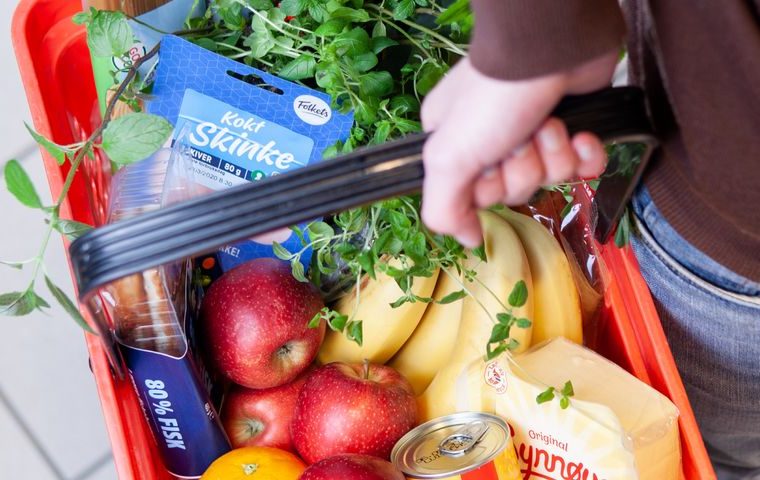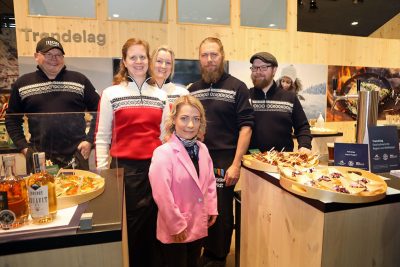NEWS ANALYSIS: Norway’s notoriously high prices at the grocery store rose yet again from February 1, and state officials have been busy scolding the country’s biggest grocery chains and their suppliers. Many unhappy customers stocked up before prices increased further, but not only the wholesalers’ coordinated hikes in what they charge retailers are to blame.

Shifting governments and consumer advocates have tried in vain to tackle the thorny problem of high prices at Norwegian grocery stores for decades. They’ve launched investigations, appointed commissions to evaluate the issue, tried to consolidate agriculture and endlessly studied competition within the sector, or lack thereof.
The grocery prices that always rank as among the highest in Europe are fueled by many factors viewed as “typically Norwegian” by two professors at Norwegian business school NHH. Frode Steen and Øystein Foros, writing last week in newspaper Dagens Næringsliv (DN), point to Norway’s high tariffs that keep imported meat and other agricultural products out of the market (more than 400 percent on lamb, for example), so as not to compete with Norway’s own meat production at higher costs. Norwegian Broadcasting (NRK) recently reported that even lamb produced in Norway has been frozen and stashed away once again in meat lockers, to keep prices artificially high. High tariffs (called tolls in Norwegian) are also seasonally placed on fruit, vegetables and dairy products to protect Norwegian farmers, who also receive huge subsidies.
Then there’s the high concentration of both wholesalers and retailers who also seem to keep foreign competition out of the Norwegian market. The large household goods company Orkla dominates on the wholesale side, wielding enormous power over the production and price of items ranging from frozen pizza to dishwashing liquid. On Wednesday, the prices of Orkla products had reportedly risen the most.
The farmers’ cooperatives for meat, poultry and dairy products including Gilde, Prior and Tine also act as “market regulators,” setting prices for what farmers must receive and then launching the mark-up process as milk, butter and cheese, for example, make their way to the grocery store shelves. On Wednesday, the farmers’ national organization Bondelaget was demanding more transparency in that process, since the prices paid farmers haven’t risen nearly as much as those at the grocery stores.
Norway’s grocery store industry, meanwhile, is dominated by one large family-controlled retailer (NorgesGruppen, which owns large chains including Meny, Kiwi, Joker and others, and controls more than 40 percent of the market) and two others (REMA and Coop). They in turn have a penchant for operating lots of small stores in various sub-segments of the market, and that adds to costs by reducing economies of scale. They’ve also allegedly managed in various ways to keep foreign grocery chains like Lidl and ICA out of the market, or at least make it difficult for them to be profitable.
Researchers have also noted that Norway has a low percentage of “house-brand” items for sale at lower prices, yet there’s long been price discrimination by wholesalers who claim they’re obliged to offer lower prices to the biggest players (like NorgesGruppen) in return for volume.
“Given the high food prices we have in Norway (where milk now costs around NOK 21 per liter, USD 2 per quart), it’s natural to raise questions about everything that’s ‘typically Norwegian,'” wrote Foros and Steen of NHH. Especially now, when the entire country was braced for February 1, one of the industry’s two coordinated dates for new price hikes. The other date is July 1, which also often coincides with new tax levels imposed by the state, but anxiety over high prices now spurred Norwegians to stock up before prices were expected to rise from Wednesday.
State broadcaster NRK reported on Monday that sales rose by NOK 5 million in the past week at one large Coop Obs store in Trondheim, despite warnings against hoarding. Other stores also reported lots of extra customers and business on Monday and Tuesday, as consumers tried to beat price hikes. Early reports on Wednesday indicated that Coop and REMA 1000 stores had raised prices the most, while Norges Gruppen’s KIWI had restrained itself and even reduced some prices in what some warned may be a stunt. A bag of 49 diverse items purchased at a REMA store in an NRK test on Tuesday had risen nearly 9 percent when exactly the same selection went through checkout on Wednesday.

The current Labour-Center government has not only been raising the professors’ same questions but with a sharper tone. It’s a political response to all the pressure the government is under because of public outcry also over high electricity rates, high oil and gas prices, higher interest rates, higher taxes and the highest inflation rate in years. Trade Minister Jan Christian Vestre of the Labour Party and Agriculture Minister Sandra Borch of the Center Party ended up calling in all the biggest players in the grocery business for questioning.
That made the two ministers just the latest in a long string, even generations, of politicians eager to show that they’re concerned about high and rising prices and dissatisfied with competition within the sector. Vestre and Borch don’t like the coordinated price hikes twice a year, and seek documentation about how they work and why they’re necessary. Vestre also wants to see how the price margins end up, since the farmers themselves often don’t profit as much. Vestre want to know why the price on the shelf rises much more than what’s paid to farmers for butter and milk.

Most suspect it’s the “middlemen” who earn the most, while they in turn blame higher costs for packaging, marketing and distribution. Borch, whose Center Party champions farmers’ interests, seems eager to shift blame to retailers and wholesalers while protecting farmers and citing the need for food self-sufficiency, especially when there’s war in Europe. Both retailers and wholesalers in turn blame the war, higher energy prices and inflation for much their price hikes, but still have clarification problems: The price of Tine’s standard butter (Meieri-smør) rose 24 percent in the stores last year, but only 9 percent from its wholesalers. Borch thinks that’s difficult to understand.
There’s also been public outcry in recent months not only over inflation but so-called krympflation, food producers’ own penchant for quietly repackaging popular items in smaller sizes while charging the same price, or even slightly more. Meat cooperative Gilde, for example, was caught placing only four strips of bacon in a package instead of five, while a package of Eldorado eggs shrunk from 18 to 12 while the price stayed the same. It’s not a new practice, but consumers in Norway finally seemed to wake up to it.
There’s no question Norwegian consumers have become more price-conscious lately and have begun feeling cheated, or taken for granted. Trade Minister Vestre claims he’s moving from “talk to action” in demanding that wholesalers’ price discrimination be prohibited, warning retailers that they’re under surveillance and urging the state competition authoritiy Konkurransetilsynet to flex its muscles. Its leader Tine Søreide had already been leading her own offensive against high food prices, and called major retailers and wholesaler in on the carpet of her own office on Wednesday.

Vestre has won praise for his new demands and doing something about a problem that’s been around for years. “It seems the (business and trade) ministry finally has a boss who’s genuinely concerned about promoting more competition instead of accepting old habits,” editorialized DN. Søreide, meanwhile, is also concerned about “how the branch has communicated price increases in advance,” she told DN this week. “We have warned repeatedly that such signals can push up prices themselves.”
Vestre himself has stressed that he’s “extremely concerned about the situation in the grocery market.” He said as early as last spring that he thinks there are “too few players and it’s too difficult for new competitors to establish themselves. Therefore we’re looking at more measures that could contribute towards better selection and lower prices for consumers.”
NorgesGruppen, the country’s largest grocery store retailer and wholesaler, claims proposed regulation of grocery stores’ purchasing prices will further increase prices. It’s objecting to “an incorrect impression” that NorgesGruppen has better purchasing terms than its competitors and that hurts competition. Any actual differences, the company says while pointing to a regulatory report, “are considerably smaller” than might be expected. The company further claims that its negotiations with other wholesalers help keep prices lower than they otherwise might be.
Food prices have risen 11.5 percent in Norway over the past year, with more increases looming. Salaries, meanwhile, rose only 3.9 percent on average, leaving consumers in a bind and prompting the political response. Newspaper Aftenposten reported last week, meanwhile, that food prices in Norway haven’t risen more than they have abroad, and in fact have gone up less than in such countries as Germany (19.5 percent), Italy (13.2 percent) and fully 17.8 percent on average in the EU.
Neighbouring Sweden, where many Norwegians flee to shop at lower prices, has seen food prices rise a whopping 18.6 percent. That may make crossing the border less attractive, but analyst and researcher Ivar Pettersen of Alo Analyse notes that Norway’s price rise has been lower mostly because prices already were high. External factors like higher prices for energy, fertilizer and raw materials therefore haven’t had as big an impact. The state regulation that still keeps out cheaper imports also plays a major role, but neither Vestre nor especially Borch seem willing to change that.
NewsinEnglish.no/Nina Berglund

